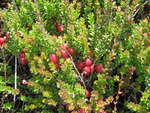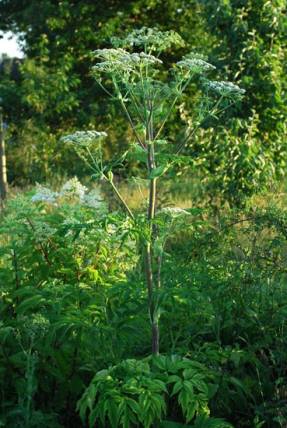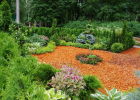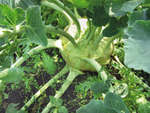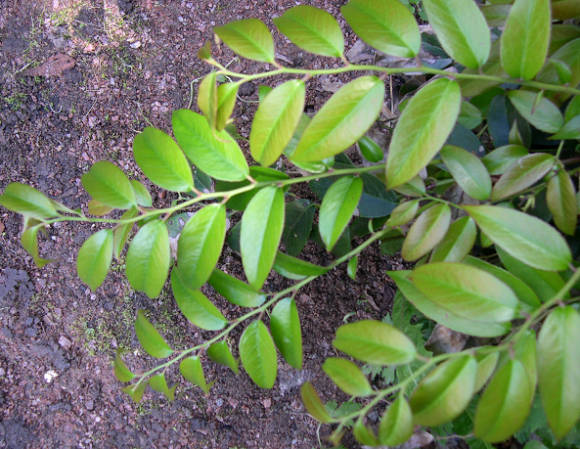Many fans of growing garlic on their site prefer spring garlic (see Spring Garlic), because they consider it more suitable for long-term storage, which even surpasses in their understanding the slightly more modest yield of this crop and smaller head size.

Choosing a landing site... It is well known that garlic grows well on sufficiently fertile soils, highly cultivated, light in texture, such as loam or sandy loam, and, of course, having a neutral reaction of the environment.
Soil preparation... Usually, gardeners begin preparing a plot for planting spring garlic in the autumn, during this period they examine the plot and choose that part of it that is as well protected from the cold wind as possible, warmed up by the sun and ensures moisture evaporation without stagnation. Spring garlic does not tolerate areas with stagnant melt, rain or irrigation water.
In the autumn, the soil is digged with the introduction of 200 g of wood soot or wood ash, 5 kg of humus or compost, 10 g of nitroammofoska per 1 sq. m.
Predecessors... By the way, the important thing is the choice of predecessors for this culture. You should know that these are absolutely not tomatoes and garlic, carrots and potatoes, all types of onions. On the land where onions grew, garlic is allowed to be planted only after 4 years.
Great friends for garlic are cucumber, cabbage, squash, zucchini, legumes, grains and spices.
Garlic will be beneficial - it will scare away pests from tulips, roses, gladioli, gooseberries, black currants, potatoes, cucumbers. All these crops, thanks to garlic, will get rid of weevils, slugs, various borers.
But legumes and cabbage, planted next to garlic, can even oppress him.
How to cook chives before planting in the ground... Not everyone knows that you need to start preparing cloves of garlic early in the fall. This is done because the garlic planting material perfectly tolerates the negative conditions of the winter period. The harvested garlic planting material can only be transferred to a room with a temperature of about 0 ° C. Usually it is placed in nylon bags and dropped into the soil to a depth of about 0.5 m. Then it remains to insulate the cache with a layer of fallen leaves and plastic wrap, and you can forget about garlic until spring.

In general, it is vegetative propagation that is characteristic of garlic - so, it is quite possible to grow winter garlic from the bulbs formed on the plant, but spring garlic, especially its varietal material, propagates precisely by chives - buds with a growth point and leaf blades that are in an embryonic state.
In order to obtain a good harvest of this crop, it is necessary to choose the most dense cloves, weighing 4.5-5 g. Before planting, the cloves must be separated, but they should not be completely naked, the scales should remain on them.
Immediately before planting, the cloves need to be sorted out - those that are larger should be set aside and used for storage, while medium and small ones can be planted. Moreover, often cloves of garlic are planted in the aisles of carrots in order to scare off the carrot fly. Garlic is also planted among early potatoes, in this case, garlic negatively affects the Colorado potato beetle, and it manifests itself to a lesser extent.
It is advisable, before planting the cloves of garlic, not only to calibrate them, but also to wake them up, for which they need to be placed in the refrigerator for a couple of days, removed and dipped in a 1% solution of copper sulfate for disinfection.
To accelerate germination, garlic cloves can be warmed up for 8 hours in a water bath at + 35 ... + 38оС.
Well, if you want for sure that the cloves germinate as quickly as possible, then you can first germinate them on a wet cloth in a warm room for 2 days, and as soon as sprouts appear, start planting them in open ground.
Let's start landing. First of all, give preference to exclusively local varieties of garlic. Once purchased, start working with the soil.
When preparing the soil, the bed must be carefully dug up onto a full bayonet of a shovel, thoroughly loosened in order to break even the smallest lumps of soil, remove all weeds and their parts and pour potassium sulfate in the amount of 3 tablespoons per square meter of land. After a couple of days, the soil will be ready for planting the garlic.
Then the soil is well leveled, loosened and, approximately stepping back from one another at a distance of 25 cm, make grooves about 5 cm deep. It is in such beds that the cloves are planted, placing them with their bottoms down. The main thing when planting is not to press the cloves into the soil, because damage to the root system that has managed to form at the bottom can occur.
It is not recommended to choose a fine and hot day for planting, it is better to choose a wet one, let it drizzle with a light rain, coupled with the soil warmed up to about five degrees Celsius. In central Russia, this period usually falls at the very end of April, sometimes, in late spring, at the beginning of May.
It is advisable to place large cloves at a distance of about 11-13 cm from each other, and for medium sizes, 8 cm is enough. After planting, the cloves of garlic should be lightly sprinkled with nutritious and moist soil, literally 2 cm, and the area should be compacted.
Further, advanced gardeners are advised to cover the bed with straw and mulch it with sawdust. Well-rotted compost or humus 2 cm thick can be used as mulch.
Further care... Garlic is not a capricious crop, however, about once every 2-3 days, the soil occupied by garlic must be loosened and all weeds must be removed in order to get rid of competitors.
As for watering, more water is required for garlic only at the beginning of development, during this stage there is usually an active growth of green mass. If the plants are deficient in moisture in the soil, the tips of the leaves of the garlic will begin to turn yellow. To avoid this, starting from the second half of the season, you need to periodically moisten the soil so that it is constantly wet, but not oversaturated with moisture. When watering, it is also necessary to be guided by the weather - if it is raining, then watering can be stopped altogether and noticed by loosening the soil in order not to retain moisture, but, on the contrary, to increase evaporation.
Garlic also requires feeding; an adequate supply of nutrients is needed in the soil throughout the growing season. Even a short-term deficiency of one or another element in the soil can have a negative effect. You can help fill the gap by carrying out both root and foliar feeding.
The first feeding should be carried out with nitrogen fertilizers. During the period when the garlic reaches a height of 7-8 cm, the plants can be fed with a solution of ammonium nitrate in the amount of 15 g per bucket of water.
In June and July, you can fertilize plants with infusion of green herbs. As soon as the bulbs begin to form, you can add 2-4 times superphosphate in dry form and the same amount of potassium sulfate in dissolved form (15-20 g per sq. M). You can also use wood ash, it is enough to add 150 g per sq. m of soil, after stirring in a bucket of water.
Now we turn to the fight against pests and diseases, garlic is often attacked by moths, thrips, onion flies, stem nematodes, hoverflies, hidden proboscis, ticks. Of the diseases, the most dangerous are false mealy growth, white rot, black mold and fusarium.
Of course, in order to prevent the appearance of diseases and pests, it is better to use various preventive measures, including observance of crop rotation and agricultural technology.It is important to plant only healthy planting material on the site, constantly loosen the soil, make timely fertilizing, and do not make frequent plantings.
Those plants that are affected by pests or diseases, and these are usually a minority, just need to be removed from the site so as not to poison the entire plantation.
With a slight but massive damage to garlic plants, which manifests itself in the form of yellowing of the leaf blades, as well as the formation of yellowish spots on them or the death of the root system, this with a high degree of probability indicates that the plants are infected with bacteria and it is simply impossible to cure them. For prevention, it is useful to regularly carry out treatments with drugs such as Gamair and Alirin - they will save you from a fungal infection, but not from a viral one.
Thrips and ticks very actively harm garlic plants; biological preparations such as Lepidocide or Bitoxibacillin can be used against them.
One of the most difficult pests of garlic is the stem nematode - a worm that feeds on juice. Its vital activity leads to the death of roots, cracking of the teeth. It is difficult to fight against a nematode, it is a quarantine pest, you can only try to plant calendula or chicory around the perimeter of the site - it may help. For prevention, periodic treatments with Ecogel are also used.
Harvesting... The most enjoyable time is harvesting. Usually, that it is time to harvest the garlic, it signals itself - its stems lodge, the tips of the leaf blades turn yellow, the root system dries out.

They usually start harvesting spring garlic in the second half of August. If tightened with collection, the teeth in the head will begin to disintegrate, and the bottom will begin to form roots.
12-14 days before harvesting, it is necessary to completely stop watering, pick up a dry day, dig up the garlic with a pitchfork and carefully remove it from the soil. Then gently shake off the soil and put on drying, where it should lie for a week. In the event of a cold snap, accompanied by precipitation, the garlic must be shifted under a canopy.
Remember that the garlic must be dried along with the leaves, after which the roots of the bulbs should be shortened by about 4-5 cm, the leaf blades should be removed, and the stems themselves should be cut to 9-12 cm.Only after that, the garlic can be sorted into fractions and placed for storage.
Storing spring garlic... It is best to store spring garlic in a well-ventilated and dry place. They keep it woven into comas, tied in bunches, simply suspended, in bags with a coarse mesh or even nylon stockings.
Good results are obtained by storing garlic in wooden boxes, collected from fresh boards, or wicker baskets. But if you decide to keep the garlic in glass jars, then it is better to sprinkle it with salt in layers, as it absorbs moisture perfectly.
Photos provided by the author

